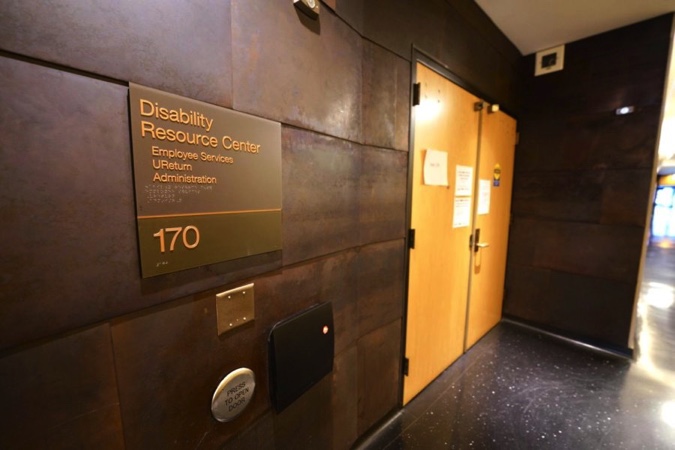University of Minnesota sophomore Samantha Truesdell fills her planner with meticulous notes every day.
She organizes everything, from tracking her bills – rent, tuition, insurance and others – to planning her upcoming paychecks and weekly schedules.
Truesdell needs to ensure she will have enough money to cover her living expenses and school. Her family is unable to help her financially, so she funds herself independently. She works up to 20 hours across three jobs – as a nanny, at the University law school and at the Center for Holocaust and Genocide Studies – and plans to work 25-30 hours each week next semester.
“It’s hard, it’s really hard,” she said. “I plan my class schedule around when I can work.”
The University and other institutions nationwide track low-income student enrollment through the number of Pell Grant recipients – a form of financial aid targeted to low-income students. In 2017, around 23 percent of University students system-wide received a Pell Grant that averaged $3,975. Nationally, 32 percent of college attendees received a Pell Grant.
Low-income students are primarily identified at the University by their expected family contribution to educational expenses. Students whose family makes more than $50,000 are not eligible for Pell grants.
Like many, Truesdell is a low-income college student. Low-income students face lower graduation rates, strained schedules and a variety of hurdles that impede their collegiate careers. While the University has improved resources available to low-income students, resulting in increased academic performance, some low-income students’ experiences still demonstrate the challenges they face.

Trading class for work
University computer science student Jeremiah Michalik started working full-time at 16 years old and has been supporting himself since he was 17 years old.
“It’s definitely given me a different level of responsibility at a younger age,” he said. “I just got pushed into adulthood really early.”
The first in his family to graduate high school, Michalik said he taught himself to complete Free Application for Federal Student Aid forms, taxes, car insurance and many other responsibilities.
After high school, he attended Minneapolis Community and Technical College for two years where he received a degree in cinema. He then came to the University for a computer science degree.
Even as a Pell Grant recipient, Michalik works about 15 to 20 hours a week as a server at Betty Danger’s Country Club to support himself.
Katie Broton, a University of Iowa assistant professor who studies the experiences of low- and moderate-income students in higher education, said three in four undergraduates work.
But Broton said while many college students work for job experience or to try out new careers, low-income students work solely to “make ends meet” and pay for school and living expenses.
Without grant funding, like Pell, low-income students are driven to work more night-time shifts and dedicate many hours to off-campus jobs, according to Broton and her colleagues’ research. When students have funding, this trend shifts, and students work more typical hours and complete higher-quality work.
Additionally, she said there is a correlation between high work hours and lower academic performance — but the relationship isn’t certain.
“There’s certainly evidence that working longer hours is associated with poor academic outcomes, but it’s not entirely clear which way the direction of those relationships work,” Broton said.
Although Michalik said he has found a good balance between work, his 15-credit class schedule and his hobby of attending concerts, he struggles to devote sufficient time to homework.
“When you’re cutting your day up between class and then you have maybe an hour break to get some food or something, and then you go straight to work until maybe 10 o’clock, 11 o’clock at night, there’s really no time of day [to do homework],” he said.
University strategies to help low-income students
For the 2006 graduating class, the four-year graduation rate for low-income students on the University’s Twin Cities campus was about 31 percent.
The rate grew to about 60 percent for the 2017 graduating class, after the Board of Regents identified the four-year graduation goal for all students in 2015, and the University increased financial aid resources, expanded student support programs and implemented a need-blind admissions policy.
Still, low-income students’ graduation rate lags behind that of their non-Pell peers, for whom the graduation rate is about 70 percent.
“We want to make sure that any qualified student, despite her or his ability to pay, can come to this University, and we can provide the maximum financial resources to help them get through,” said Bob McMaster, the University’s vice provost of undergraduate education.
Four-year graduation rates for Pell-receiving students at the University have seen “tremendous” increases over the past 10 years, he said.
One approach to increasing the graduation rates was increasing the available financial support for low-income students, McMaster said. On the Twin Cities campus in the 2016-17 academic year, $148 million in financial support was available, compared to $130 million five years ago.
Robert Kelchen, assistant professor of higher education at Seton Hall University in New Jersey, said expanding low-income financial support, like Pell Grants, is key to improving the graduation gap because the money goes directly to low-income students.
McMaster said students with no expected family contribution toward college expenses are likely to receive around $16,500 in financial gifts and $2,700 in work study.
But with the full cost of attendance for in-state students at about $27,000, many students still must take out loans and earn extra scholarships to fully afford a year of school.
Truesdell receives a Pell grant, state grants, University and other scholarships and University and federal loans.
“I wish I could just come to school and focus on school only,” she said. “It can just be stressful knowing I have to make ends meet or take out loans just to live somewhere.”
McMaster said the University has expanded support programs to ensure its students — which includes low-income and first-generation students, non-native English speakers and students of color – get additional help.
“We’ve really worked on developing a strategy to maximize the need-based aid that goes to our neediest students,” he said.
The national scope of low-income students on campus
Weeks ago, Truesdell frantically applied for more than 20 jobs. She was trying to make enough money to cover an unexpected $500 summer rent payment.
Luckily, she learned the payment wasn’t due until June 1 and didn’t have to add another job. For Truesdell, it was just another problem adding stress to her life.
“It was really stressful, and I had a lot of meltdowns,” she said.
Challenges like this reflect how low-income college students nationwide balance the stress of bills and income, researchers say. And with higher education costs surpassing inflation rates, low-income students increasingly must find funding elsewhere, Kelchen said.
Low-income students often use a combination of many sources to fund their education, including federal and state grants, college scholarships, student loans, parents’ loans and work, Kelchen said.
“Paying for college for low-income students is really like trying to piece a puzzle together,” he said. “It’s a very complicated picture with all the money you need to pay for college.”
Low-income students nationwide can receive at most approximately $6,000 yearly in Pell Grants. But this only covers around 25 percent of the cost of attendance on average nationwide, Kelchen said.
The University expanded the President’s Emerging Scholars program to help exceptionally low-income students make up for some of that gap.
University economics sophomore Chasse Thomas cites PES as a main factor in his success.
PES students receive a first-year scholarship and fourth-year scholarship, participate in workshops and check-in with peer advisers to ensure timely graduation.
“They do everything in their power to make sure you can get the job done,” Thomas said.
His parents were unable to support him financially and didn’t attend college themselves, leaving him to solve a major roadblock by himself weeks before he was set to start his freshman year.
Thomas’ FAFSA paperwork wasn’t accepted, and his dream of attending college was left in limbo. Needing financial aid, Thomas tackled it by himself and received his financial aid package just in time.
Despite the challenges he faces, Thomas said he is proud to be a first-generation, low-income college student. He now serves as a role model for his 17-year-old brother Tristen Thomas by sharing college application tips.
“I try to give him as much advice as I can because my parents … they didn’t have much advice,” he said. “They just kind of said, ‘We’ll be here to [emotionally] support you.’”






















